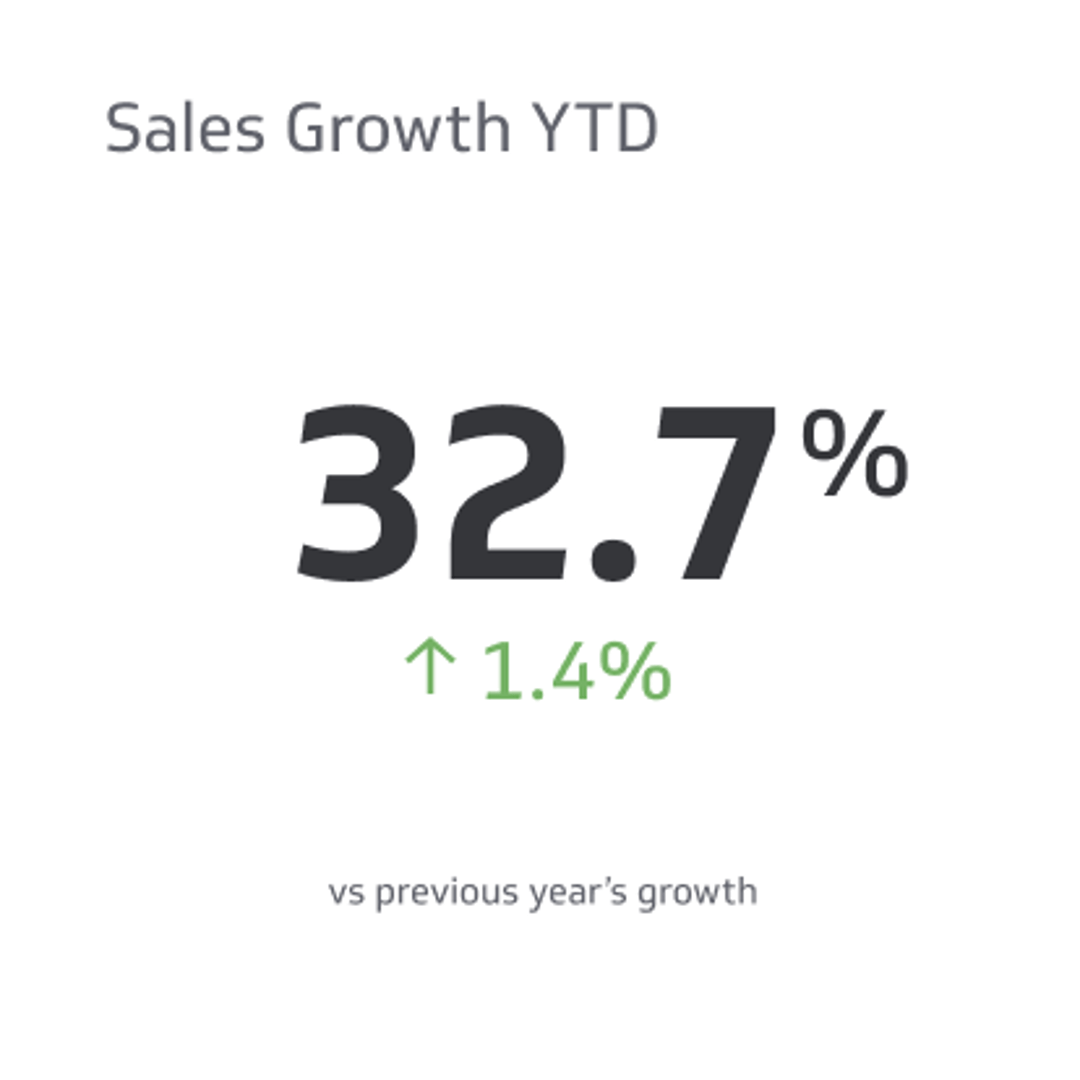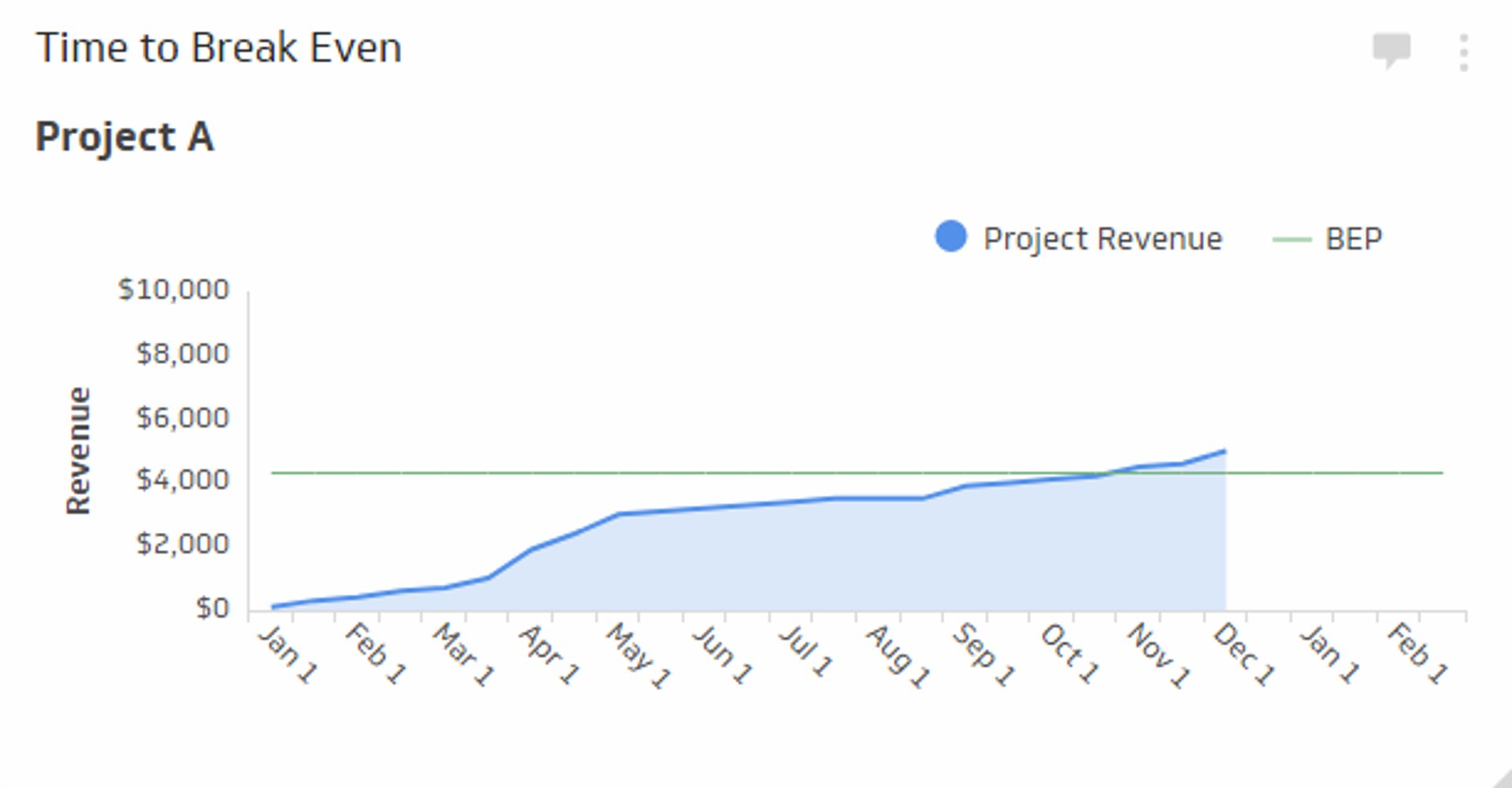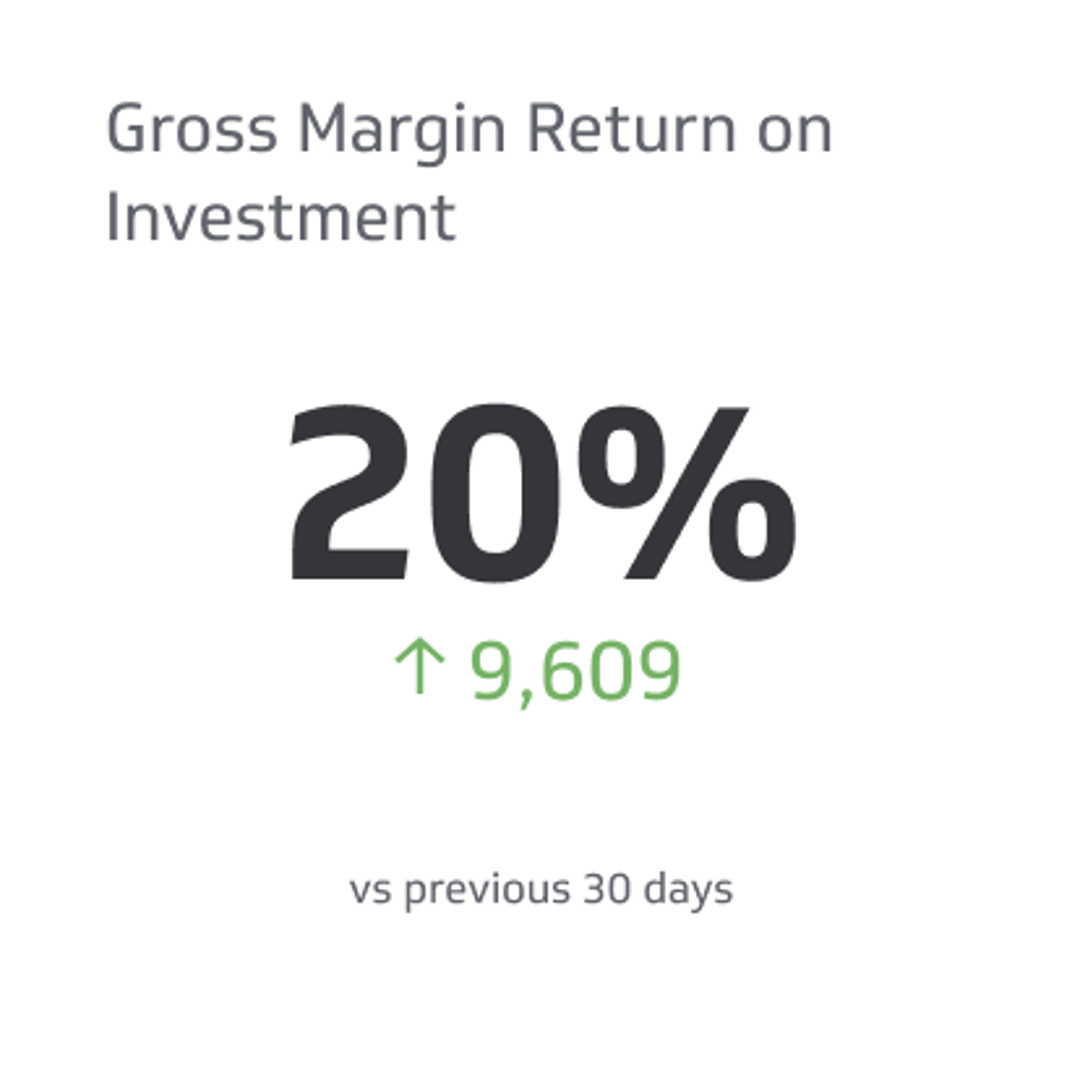Sales Growth Metric
Sales growth analysis is a core part of any business strategy and allows you to set and forecast realistic revenue objectives.
Track all your Sales KPIs in one place
Sign up for a 14-day free trial and start making decisions for your business with confidence.

What is Sales Growth?
Sales growth is a metric that measures the ability of your sales team to increase revenue over a fixed period of time. Without revenue growth, businesses are at risk of being overtaken by competitors and stagnating. Sales growth is a strategic indicator that is used in decision making by executives and the board of directors, and influences the formulation and execution of business strategy.
It’d be hard to overstate the importance of the sales growth metric because it is tied directly to revenue and profitability. Revenue Growth is the drumbeat by which all organizations march. When performance declines, pressure mounts on the sales organization to deliver results. Conversely, a high percentage growth in sales is cause for optimism for all stakeholders such as executives, the board of directors, and shareholders. Also, take a moment and review the difference between revenue and net profit.
Key Indicators for Sales Growth
- A positive sales growth percentage over the specified time period.
- A negative sales growth percentage over the specified time period
Key terms
- Current sales revenue: The total dollar value of sales during the current time period.
- Previous period sales revenue: The total dollar value of sales during the period time period.
Why is the Sales Growth metric important?
Few sales metrics have the potency of sales growth. All eyes are focused on sales numbers and achieving monthly, quarterly, and annual growth. What’s fascinating about the sales growth metric is that it can act as a rallying call for your entire team.
By aiming to achieving an organizational target, like percentage growth in revenue. you can develop a cascade of interdependent metrics at each level of your sales team. For example, the revenue and sales executives will be tasked with that high-level objective, but directors and managers will be focused on activities directly under his or her control. While executives may track sales growth, directors may track sales by rep, and reps may track his or her quote-to-close ratio.
Here’s an example of how the sales growth metric can be used to create a cascade of interdependent performance metrics.
| Role | Metric |
|---|---|
| Executive | Revenue Growth by Quarter |
| Director | Sales by Region |
| Managers | Sales Revenue Per Hour; Missed Sales Opportunities; Sales Cycle Duration |
| Reps | Conversation to Appointment; Sales Quota Attainment |
Using the sales growth metric to lead your team
The sales growth metric acts as a rallying call for your entire business but lacks the specificity your frontline reps and account managers need to do better at their jobs. As the table above shows, the cascade of metrics that follow from sales growth can bring clarity and focus to sales activities throughout your team.
How best to lead your team with these metrics? The answer is to make performance metrics visible to everyone on your team. Whether you do that with Google Sheets, PowerPoint, Excel, or Salesforce Dashboard is up to you.
Example of a sales growth dashboard
Here’s an example of a sales dashboard using the growth metrics as the central metric. The dashboard reports on sales KPIs on a monthly basis and uses targets to demonstrate how everyone on the team contributes to the achieving the business target.

Related Metrics & KPIs



